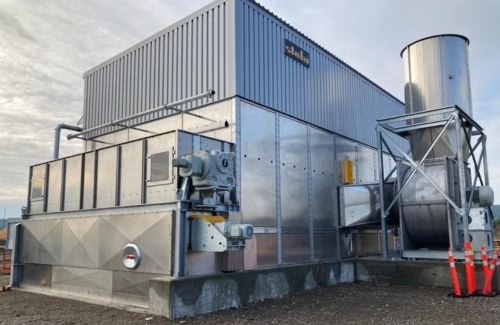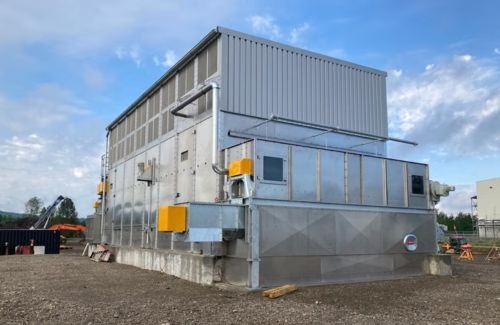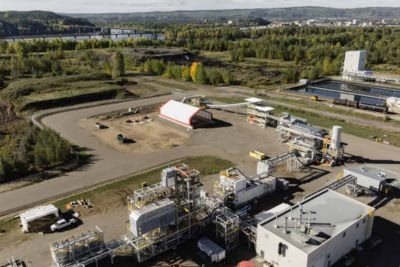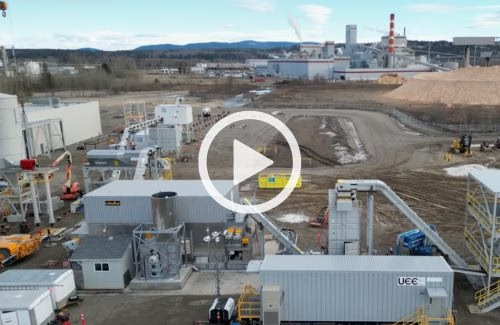Challenge:
Arbios Biotech, a strategic joint venture combining Canfor’s extensive forestry supply chain with Licella’s pioneering Cat-HTR hydrothermal liquefaction (HTL) technology, has established a facility in Prince George, British Columbia. This facility is designed to transform underutilized biomass, including forest residues, sawmill byproducts, and other wood-derived residuals, into a low-carbon fuel source for hard-to-decarbonize sectors such as aviation and marine transport. The combined expertise and leadership of Canfor and Licella’s were instrumental in driving this innovative project.
A key challenge in the project was designing an efficient drying process to prepare biomass feedstock for hydrothermal liquefaction. The facility required a drying solution that could operate reliably in the challenging northern British Columbia climate while integrating seamlessly with the excess heat available from the HTL process. Additionally, the project involved intricate coordination across three time zones, involving Canadian, Indigenous, and Bavarian partners.
STELA Solution:
As part of a multidisciplinary effort to optimize bio-oil production, STELA Laxhuber Drying Technologies GmbH took the lead in providing a highly efficient drying solution for the facility. STELA contributed its expertise in low-temperature drying by integrating its BT 1/6200-12 belt dryer into the facility’s process. The STELA dryer plays a crucial role in ensuring efficient moisture reduction of the biomass feedstock before hydrothermal liquefaction.
Key features of the drying system:
- Drying Capacity: Handles hog fuel with particle sizes <1 inch (25mm), processing up to 2,825 cubic feet per hour (80m³/h).
- Energy Efficiency: Utilizes most of the excess heat from the HTL process, reducing the facility’s overall energy consumption.
- Evaporation Performance: Capable of evaporating up to 7,700 lbs per hour (3.5 mt/h) of moisture, optimizing the feedstock for bio-oil conversion.
Results:
The implementation of the STELA drying system within the Prince George facility marks an important step toward optimizing biomass processing for bio-oil production. By ensuring efficient moisture reduction, the system contributes to a more reliable and scalable process, helping advance the facility’s long-term sustainability goals.


Conclusion:
This project underscores the value of cross-continental partnerships and the power of industrial collaboration. With Canfor’s supply chain experience and Licella’s HTL innovation, Arbios Biotech exemplifies how joint ventures can unlock sustainable energy solutions. The Prince George facility serves as a model for future developments in sustainable bio-oil production.
“We chose Stela because they are best-in-class in drying technology, with a proven track record of delivering high-quality, efficient, and reliable drying systems. Their team has been a valuable partner, providing excellent support throughout the installation of our dryer. They have been responsive and helpful whenever we’ve needed assistance. The commissioning of the system is progressing well, and we look forward to integrating it with our full plant operations.”
Stefan Muller, P.Eng, Chief Operating Officer
About Arbios Biotech:
Arbios Biotech is at the forefront of biofuel innovation, transforming forestry residuals into renewable bio-oil for sustainable industrial applications. With a focus on circular economy principles and strategic partnerships, Arbios is driving the transition to low-carbon energy solutions. The Prince George facility is a testament to the synergy between Canfor and Licella in creating scalable, impactful solutions for the global energy sector.


